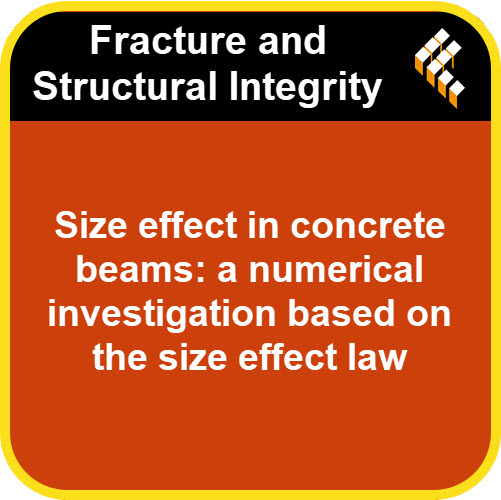Fracture and Structural Integrity: The Podcast
Stay at the cutting edge of fracture mechanics and structural integrity research with the official podcast of the Fracture and Structural Integrity journal. Join us for insightful interviews with top researchers, in-depth discussions of groundbreaking papers, and explorations of emerging trends in the field.
RSS Spotify YouTube Amazon Music
Size effect in concrete beams: a numerical investigation based on the size effect law
2025-04-26
https://www.fracturae.com/index.php/fis/article/view/5392
The size effect significantly influences the structural design of concrete elements, particularly when applying fracture mechanics principles. As structural dimensions increase, a significant outcome of the size effect is the decline in both strength and ductility. To characterize concrete fracture behavior, various fracture mechanics models have been proposed, integrating material fracture properties that are unaffected by changes in geometry and size. Bažant’s size effect law explains this phenomenon based on the transition from ductile to brittle failure in geometrically similar specimens. When failure is delayed after crack initiation, the size effect is mainly influenced by the energy released during macro-crack propagation. Conventional experimental studies on this phenomenon have typically utilized two-dimensional geometrically similar specimens, though they are often limited by laboratory constraints. While experimental studies on notched concrete beams under three-point bending (TPB) exist, their size is often restricted due to practical challenges in handling large specimens and also numerical modeling of large-scale fracture simulations remains limited due to high computational requirements. This research proposes an optimized finite element modeling approach to numerically examine the size effect on the fracture characteristics of notched concrete beams subjected to three-point bending (TPB). Beams with depths up to 1000 mm were analyzed using this approach. The numerical findings align well with experimental size-effect data from the literature, exhibiting the expected trends. Furthermore, fitting the results to Bažant’s size effect law demonstrated a strong correlation, validating the accuracy of the proposed numerical model.
DownloadFiletype: MP3 - Size: 7 MB - Duration: 6:28m (160 kbps 24000 Hz)
Powered by Podcast Generator, an open source podcast publishing solution | Theme based on Bootstrap
